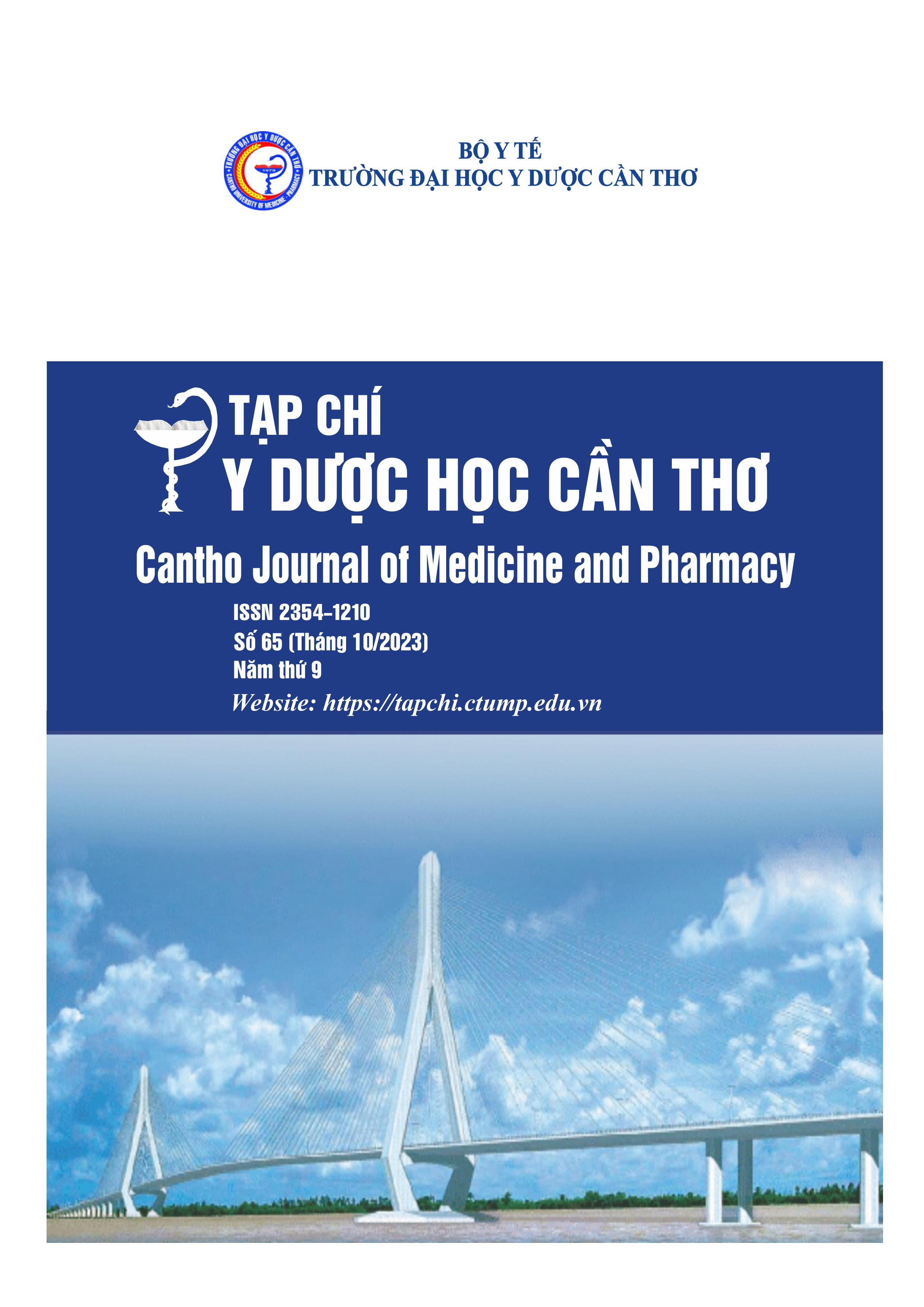SITUATION OF DRUG INTERACTIONS IN INPATIENTS TREATMENT AT CA MAU HOSPITAL OF TRADITIONAL MEDICINE IN 2022
Main Article Content
Abstract
Background: Drug interaction is a common problem in clinical practice and is an important factor affecting the effectiveness of treatment. Some drug interactions provide significant benefits but in many cases cause side effects. Objectives: To evaluate the status of drug interactions and related factors in inpatient treatment at Ca Mau Hospital of Traditional Medicine in 2022. Materials and method: A cross-sectional description of 420 medical records inpatient treatment at Ca Mau Hospital of Traditional Medicine from September 1, 2022 to December 31, 2022. Selecting a random sample from the system. Results: The drug interaction rate of inpatient medical records was 45.5%. Doctors without post-graduate training prescribed drug interactions with a rate of 41.4%; specialization 1 and master was 30.5%; second major and doctorate was 9.1%. Drug interactions occurred at all ages with the rate of 37-62%. The rate of patients taking more than 7 drugs in a prescription had drug interactions was 53.8%. Patients with sequelae of cerebrovascular accident, renal failure, diabetes, and musculoskeletal disease had a higher rate of drug interactions compared with no disease, respectively 3.9 times, 6.26 times, 2 ,8 times, 10.8 times. Conclusion: The rate of drug interactions in prescribing treatment in inpatients is quite high. The majority of drug interactions are moderately adverse. The rate of prescription drug interactions is highly dependent on the treating physician. Greater attention should be paid to synchronous, continuous, and effective interventions to limit the prescribing of adverse drug interactions.
Article Details
Keywords
Drug interactions, Ca Mau Hospital of Traditional Medicine, inpatient
References
2. Nguyễn Thái Hà. Xây dựng danh mục tương tác thuốc đáng chú ý trong điều trị tại Trung tâm y tế huyện Bình Lục-Hà Nam. Đại học Dược Hà Nội. 2019. 17-27.
3. Võ Thị Hồng Phượng, Nguyễn Thị Hiền. Khảo sát các tương tác thuốc trong đơn thuốc điều trị ngoại trú tại Bệnh viện Trường Đại học Y Dược Huế. Tạp chí Y Dược học- Trường Đại học Y Dược Huế. 2018. 8(5), 26-36, https://www.doi.org/10.34071/jmp.2018.5.4.
4. Trần Thị Thúy Nga. Nghiên cứu tình hình và đánh giá kết quả can thiệp trong điều trị nội trú tại Bệnh viện Đa khoa vùng Tây Nguyên năm 2018-2019. Đại học Y Dược Cần Thơ. 2019. 43.
5. Bộ Y tế. Quyết định 5948/QĐ-BYT ngày 30/12/2021 về việc ban hành Danh mục tương tác thuốc chống chỉ định trong thực hành lâm sàng tại các cơ sở khám bệnh, chữa bệnh. 2021.
6. Baxter Karen. Stockley's Drug Interactions. Pharmaceutical Press. 2010. 1165.
7. Rawabi A., Mohammed A. Prevalence of drug–drug interactions in geriatric patients at an ambulatory care pharmacy in a tertiary care teaching hospital. BMC Research Notes. 2018. 11. 234, https://doi.org/10.1186/s13104-018-3342-5.
8. Aigul Z. Mussina, Gaziza A. Smagulova, Galina V. Veklenko, et al. Effect of an educational intervention on the number potential drug-drug interactions. Saudi Pharmaceutical Journal. 2019. 27(5). 717-723, https://doi.org/10.1016/j.jsps.2019.04.007.
9. Lorene Z., Severine H., Ingeborg W., et al. Prevalence of drug-drug interactions in older people before and after hospital admission: analysis from the OPERAM trial. BMC Geriatrics. 2021. 21. 571, https://doi.org/10.1186/s12877-021-02532-z.


